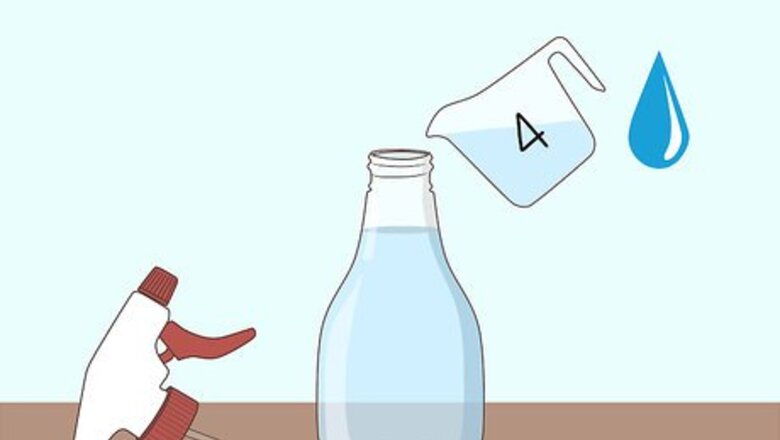
views
X
Trustworthy Source
PubMed Central
Journal archive from the U.S. National Institutes of Health
Go to source
Pure neem oil, which may also be called crude or raw neem oil, can cause skin irritation by itself. However, it’s safe and effective when it’s diluted in water or mixed into a carrier oil, like olive or coconut oils, and you can easily make a preparation of your own at home!
Making Neem Oil Insect Spray for Plants
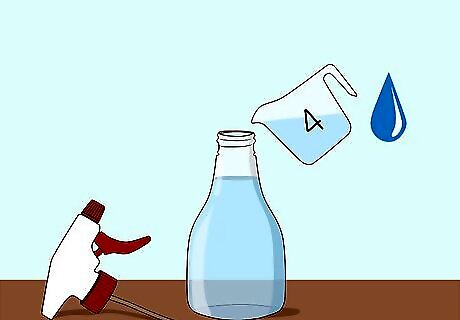
Pour 4 cups (0.95 L) of water into a plastic spray bottle. If you want to use neem oil to keep insects off of your plants, dilute it with water in a spray bottle. This will give you more control over the application of the neem mixture, so you’ll be able to apply it where you really need it. You can pick up a simple spray bottle at a grocery store or dollar store near you, or anywhere that cleaning supplies are sold. If you’ll be treating a lot of plants, make a larger batch with the same proportions, and pour them into a pump sprayer designed for controlling weeds. You can pick up one of these anywhere garden supplies are sold.
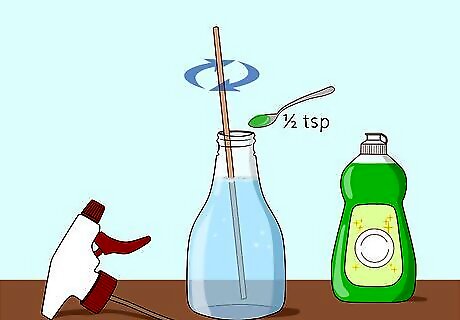
Stir in ⁄2 tsp (2.5 mL) of liquid dish soap as an emulsifier. Since oil and water don’t mix, you’ll need to add soap to the mixture. Liquid dish soap will emulsify the oil, allowing it to combine evenly throughout the water. The emulsion will work best if you stir the soap into the water first, then add the neem oil. This is similar to the way vinegar helps oil and water mix in a salad dressing. You can either stir the water and soap with a long, narrow stick that fits into the bottle, or you can put the lid on the bottle and shake them together.
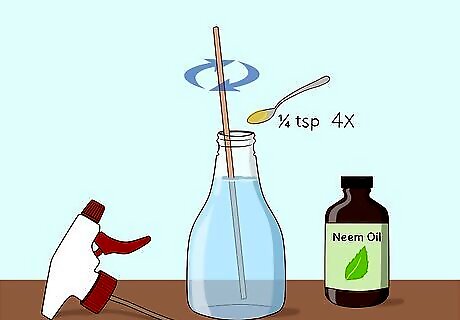
Measure and slowly add 1 teaspoon (4.9 mL) of neem oil to the bottle. Add the neem oil a little at a time, stirring or shaking the mixture after each addition. This will help the neem oil disperse evenly through the water. If you have very sensitive skin, you might want to wear gloves when you’re handling the pure neem oil. Some people may experience skin irritation if they come into direct contact with neem oil that hasn’t been diluted.
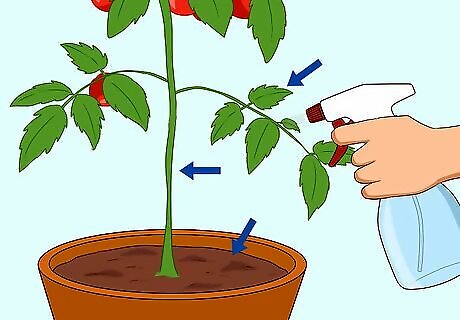
Spray the mixture onto your plants and the soil around their roots. The neem oil is effective against many pests, and it may work as a fungicide as well. Using the spray bottle, soak the leaves, stems, and soil of the plants with the neem mixture thoroughly. Focus especially on areas where insects have been a problem. For instance, if aphids are eating the leaves on your tomato plants, make sure you soak the leaves well. Neem oil is safe to use, even if you drench the soil with it. However, some sensitive plants, like orchids, may be sensitive to neem oil. If you notice the flowers of these plants wilting, it may not be a good option for your garden. Neem oil will not only repel many insects in the short-term, but it can also be used for long-term prevention. Since neem oil disrupts insects’ reproductive ability, over time, the entire population of affected insects will be reduced. However, it may take weeks or even months for all of the bugs to be gone.
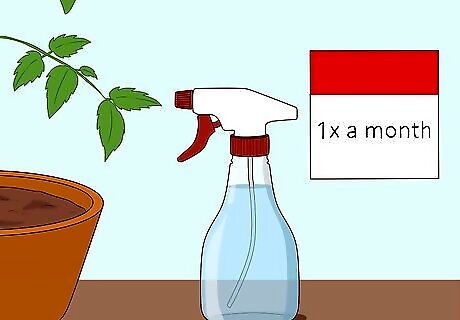
Reapply the neem oil once a month for general insect prevention. If you're dealing with an infestation of insects, you may need to apply the oil about once a week or so until the population starts to drop off. Also, if your plants are outside, you may need to re-spray them after a heavy rain, as the neem oil will be washed off. Use the mixture within 8 hours after you mix it. After that, the emulsion will start to break down.
Repelling Mosquitoes on Your Skin
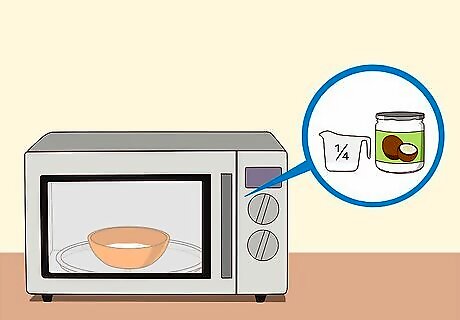
Melt ⁄4 cup (59 mL) of coconut oil in the microwave for 10-15 seconds. Coconut oil is solid at room temperature, so you’ll have to melt it before you can mix it with the neem oil. You can do this by measuring the coconut oil into a microwave-safe bowl, then putting it into the microwave for short bursts until it melts. This will keep the oil from scorching. Stir the coconut oil each time you heat it to help it melt more evenly. Since neem oil can be irritating to your skin, it’s best to add it to a carrier oil, rather than applying it directly. Coconut oil is especially nourishing for your skin, so it makes a great option as a carrier for neem oil. You could also use any other oil that you have on hand, including olive, almond, canola, or jojoba oils.
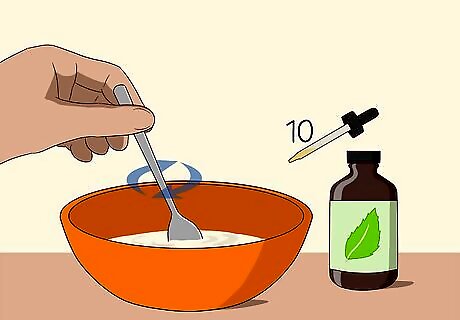
Mix about 10 drops of neem oil with the melted coconut oil. Once the coconut oil is melted, add about 10 drops of neem oil to the bowl. Use your spoon to stir the mixture thoroughly. Otherwise, you may end up with pockets that are only coconut oil, and the mixture will be less effective at repelling mosquitoes. While it may not be as unpleasant as commercial insect repellants, neem oil does smell strongly of garlic. To counteract this, add 2-3 drops of your favorite essential oil, like lavender or rosewater. Just make sure whatever you use is safe to apply to your skin.

Allow the mixture to cool to about room temperature. If you apply the melted coconut oil to your skin, you could burn yourself. Also, liquid coconut oil is much messier to work with than in its solid state. To avoid this, let the mixture cool for at least 10-15 minutes before you use it. If it’s still warm when you’re ready to apply it, make sure it’s comfortable to the touch. Don’t worry if the coconut oil starts to harden. You’ll still be able to spread it on your skin in its solid state.
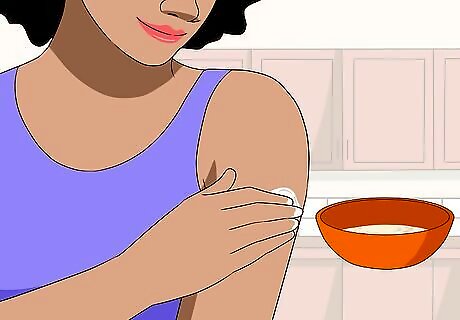
Spread the mixture on your skin to repel mosquitos for up to 12 hours. Dip your fingers in the neem oil mixture, then rub a thin layer onto any of your skin that will be exposed when you head outdoors. The scent of the neem oil will help repel mosquitoes, keeping you safe and comfortable. While the neem oil will repel insects for about 12 hours, if you get wet or go swimming, you may need to reapply the neem mixture sooner. The coconut oil will also moisturize your skin, and the neem oil may ease some skin conditions, including eczema. Do not use neem oil or other insecticides on cuts or scrapes. This mixture will stay good for about a year.Tip: Neem oil makes a great alternative to the commercial insecticide DEET if you’re trying to avoid harsh chemicals. However, it may not be quite as effective as DEET. If you’ll be traveling to an area where malaria is a concern, it’s best to err on the safe side and use a commercial insecticide to protect yourself from this dangerous disease.
Using Neem Oil on Your Hair
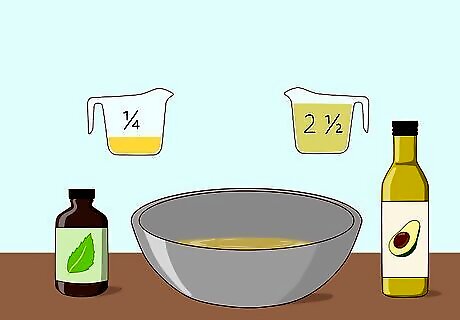
Dilute ⁄4 cup (59 mL) of neem oil in 2 ⁄2 cups (590 mL) of a base oil. Neem oil is often used as a treatment for dandruff and lice, and it may also help your hair grow faster. However, it can be irritating to your skin if you use it in its pure form. To avoid this, pour ⁄4 cup (59 mL) of pure neem oil into a bowl, then mix it with 2 ⁄2 cups (590 mL) of an oil such as olive, avocado, sesame, or jojoba oils. While you can choose any oil you prefer, a nutrient-rich option like avocado or jojoba oil will provide an extra conditioning boost to your hair. You can mix the oils in a bowl, or you can put it in a squeeze bottle for easier application. If you want to make more or less of this preparation, aim for about a 10-20% dilution of neem oil to 80-90% base oil. The neem oil mixture is extremely rich in antioxidants, so it will nourish and condition your hair and scalp.
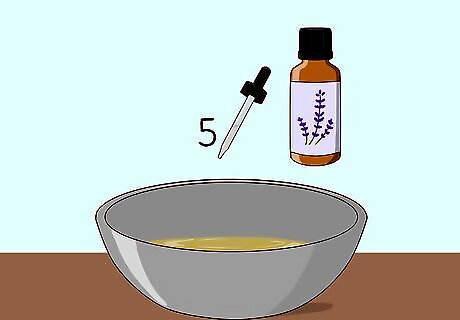
Mix in 4-5 drops of your favorite essential oil to mask the smell. Neem oil has a strong smell similar to garlic. To avoid this, add about 4-5 drops of an essential oil you like, such as lavender, sandalwood, or rosemary essential oil. Avoid citrus-based oils in your hair, as they can cause irritation to your scalp if you go out in the sun.Tip: In addition to smelling nice, these essential oils may help make your hair healthier. For instance, rosemary oil may improve hair growth and circulation, while sandalwood oil helps prevent split ends. Lavender oil conditions hair and keeps it shiny, and may also help treat dandruff.
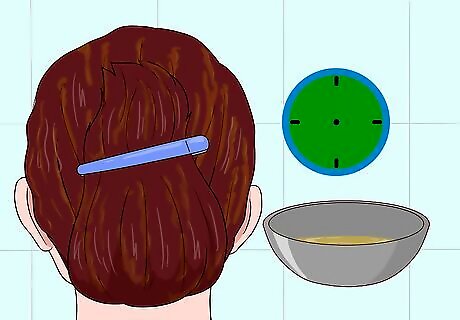
Apply the mixture to your hair and leave it on for an hour. Liberally apply the neem mixture to your hair, focusing especially on your scalp and roots. Once your roots are fully saturated with the mixture, pin up your hair if it's long, and wait for about an hour before you rinse it out. For even more effectiveness, leave the neem oil on your scalp overnight. You can also apply this mixture to your pets to help kill and prevent fleas.
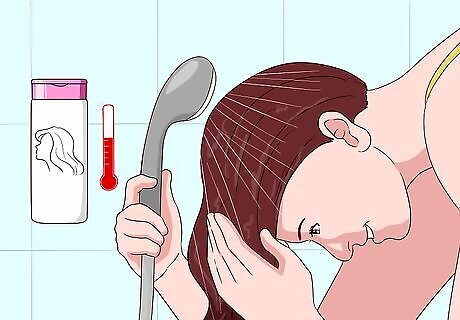
Wash your hair as usual after the treatment. After about an hour, wash your hair with your normal shampoo in warm water, then rinse it out thoroughly. If you can still feel the oil in your hair after the first wash, shampoo it a second time to ensure all of the oil is gone. After you wash your hair, apply your usual conditioner. Repeat this process about once a week or as often as you need to for dandruff control or general conditioning. If you're treating lice, you can use the neem oil once a day until they're gone. Store your mixture in the squeeze bottle or an air-tight container. It will stay good indefinitely. When you want to use it again, shake the container thoroughly.



















Comments
0 comment